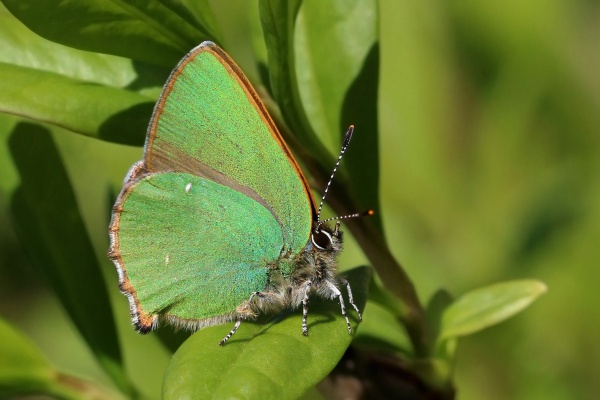Facts About Green hairstreak
The green hairstreak butterfly, scientifically known as Callophrys rubi, is an enchanting member of the Lycaenidae family. The name "Callophrys" is derived from the Greek word for "beautiful eyebrows" while "rubi" is from the Latin term for Rubus, one of the butterfly's host plants.
Callophrys rubi has several subspecies, each inhabiting various regions worldwide, including Europe, the Caucasus, Kopet Dag, the Iberian Peninsula, Morocco, Asia Minor, the Urals, Tien-Shan, Altai, Siberia, Transbaikalia, the Far East, Amur, Ussuri, and Sakhalin.
With a wingspan of approximately 26–30 millimeters, this butterfly’s uppersides are a muted brown, contrasting with the vibrant iridescent green of the undersides. Its caterpillars are green with yellow markings, presenting a distinctive slug-like appearance.
These butterflies are most commonly seen from March to June, during which time the males often display territorial behavior. They lay eggs individually, and the butterflies overwinter as pupae. The larvae are not selective eaters and feed on a variety of plants, making them polyphagous.
Green hairstreak butterflies flourish in diverse habitats including chalk downlands, heathlands, moorlands, and woodland clearings, at elevations ranging from sea level up to 2,300 meters. They are prevalent across Europe, North Africa, Russia, Asia Minor, and other regions. Although these butterflies remain widespread in the UK, many colonies have vanished in recent years. In Mediterranean countries, they are usually found near coastal areas.

 Ireland
Ireland